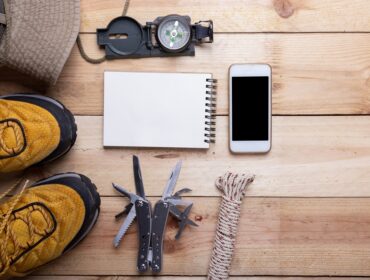Summertime means plenty of sunshine, but all that warm weather can sometimes be the harbinger of mighty thunder storms as well. An afternoon storm can dump thousands of gallons of water within minutes, and flash flooding can occur in places that look like they haven’t seen rain in months. To protect your camp from flooding when the clouds open up, here are just a few simple tips.

Choosing your location
Being observant when picking out a place to set up camp is the best way to prevent campsite flooding from ruining your outdoor adventures this summer. Look for signs of washouts and erosion that are indicators that moving water has run through the area in the past.
Arroyos (dry stream beds) out west can be hazardous places to camp. Visually, they are often a great area to set up camp because the area is free of trees, thick vegetation and rocks. However, a rain storm many miles up the channel can bring a sudden flash flood through without warning. Avoid areas that look like water has carved out a channel.
Never just pick a campsite because it is visually appealing. Take time to consider what would happen if tens of thousands of gallons of water were flowing through the area. Think of where and how it would move. Would the spot chosen for the tent or camper be wise based on those conditions? If not, pick another spot to camp.
Avoiding beaches & waterways
When the campsite choice is a small geographic area, avoid beaches and banks of waterways. Tides and rain runoff as well as locks and dams can greatly and quickly change the depth of nearby waterways. A dam spillway opened at night can wash away a campsite while campers are sleeping.
A slightly elevated area just big enough to hold the camper or tent with sloped areas on all four sides provides great runoff during and after rain storms. Hard bare ground turns to mud as soon as the rain starts, so be sure to reinforce your ground cover in areas with little grass or gravel. Areas with a high gravel-to-dirt ratio are much less sloppy when getting pummeled by rain.
Do not camp close to hillsides. Runoff from a heavy rain follows the path of least resistance, and the velocity of that runoff can become significant as it flows down over a steep hillside. Look for signs of erosion on hillsides such as exposed tree roots and dislodged rocks.
One simple way to prevent your personal belongings from getting soaked during any storm is to make sure your tent has what is called a “bathtub” bottom. This is a 100 percent waterproof material that extends a few inches up each side of the tent. The bathtub bottom is capable of channeling small rivulets of runoff around the tent without worry of water running inside the tent, or coming up through the floor during a storm.
Featured Image from Kelly Sikkema/Unsplash




